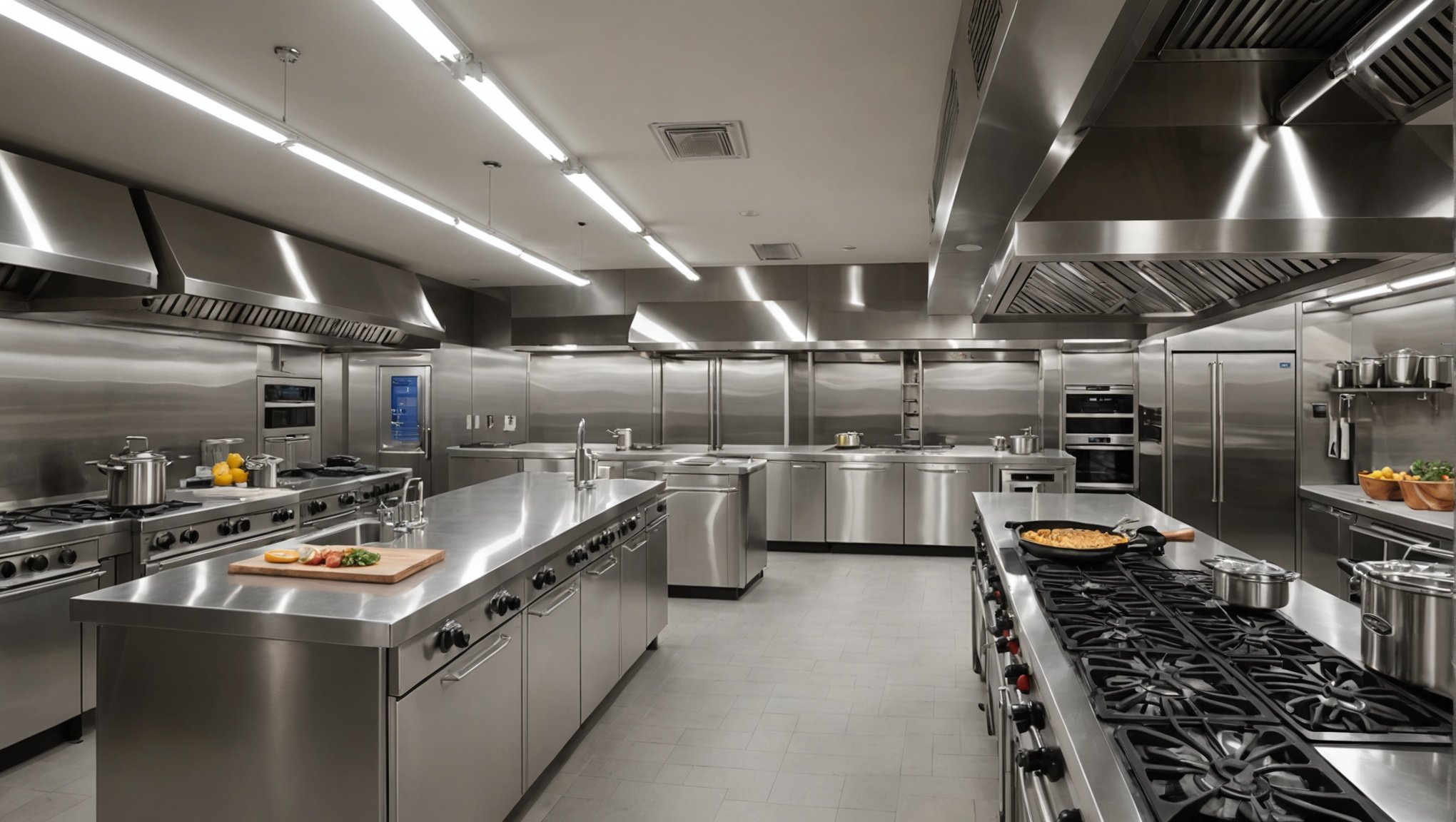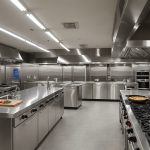Are you tired of constant cleaning in your kitchen only to find dust and allergens lingering? A centralized vacuum system could be your solution. This innovative approach not only streamlines your cleaning process but also improves indoor air quality, creating a healthier cooking environment. Discover how this efficient system can transform your kitchen into a space that's both pristine and allergen-free, allowing you to cook and enjoy meals more comfortably.
Understanding Centralized Vacuum Systems
Centralized vacuum systems are an innovative solution for maintaining kitchen cleanliness and ensuring allergen reduction. Unlike traditional vacuums, these systems consist of a central power unit, typically located in a utility room or garage, connected to various inlets throughout the home via a network of pipes. This setup allows users to plug a lightweight hose into any inlet, enabling convenient and efficient cleaning without the need to lug around a heavy vacuum cleaner.
Topic to read : Transform Your Kitchen: How a Meal Planning Whiteboard Can Simplify a Slim Diet
One of the main differences between centralized vacuum systems and traditional vacuums is their ability to exhaust dust and allergens outside the living area. This feature significantly contributes to allergen reduction, making it an ideal choice for households with allergy sufferers or pets. Additionally, centralized systems often boast more powerful motors, leading to superior suction capabilities and improved kitchen cleanliness.
In kitchen environments, centralized vacuum systems offer numerous benefits. They efficiently remove crumbs, spills, and other debris, ensuring a hygienic space for food preparation. Moreover, the absence of a bulky vacuum unit makes it easier to clean hard-to-reach areas, such as under cabinets and appliances. By investing in a centralized vacuum system, homeowners can enjoy a cleaner, healthier kitchen environment with minimal effort.
Have you seen this : Transform Your Kitchen: How a Meal Planning Whiteboard Can Simplify a Slim Diet
Health Advantages of Centralized Vacuum Systems
Centralized vacuum systems offer significant health benefits by enhancing indoor air quality and promoting allergen reduction. Unlike traditional vacuums, these systems effectively remove allergens by exhausting dust and particles outside the living area, reducing exposure to airborne irritants. This mechanism is particularly beneficial for households with individuals who suffer from allergies or asthma, as it minimizes the circulation of allergens like pet dander, dust mites, and pollen.
The impact on respiratory health is profound. By maintaining a cleaner indoor environment, centralized systems help reduce respiratory issues, providing relief to those with breathing difficulties. Improved air quality can lead to fewer allergy symptoms, such as sneezing and congestion, and contribute to overall well-being.
Case studies have demonstrated the health improvements associated with centralized vacuum systems. In one study, households that switched to centralized systems reported a noticeable decrease in allergy symptoms and improved air quality. Residents experienced fewer respiratory problems, highlighting the system's effectiveness in creating a healthier living environment.
By investing in a centralized vacuum system, homeowners can enjoy a cleaner home with reduced allergens, leading to better health outcomes for all household members.
Maintenance of Centralized Vacuum Systems
Proper maintenance of centralized vacuum systems is essential to ensure system longevity and maintain efficiency. Routine tasks include regularly emptying the dirt canister or bag and inspecting the hose and inlets for blockages. Keeping these components clear helps maintain optimal suction and performance.
Routine Maintenance Tasks
-
Filter Changes: Regularly changing or cleaning the system's filter is crucial. A clogged filter can reduce suction power and increase motor strain. Depending on usage, filters should be checked every few months.
-
Cleaning: Clean the hose and inlets periodically to prevent debris build-up. This can be done using a cloth or specialized cleaning tool.
Troubleshooting Common Issues
If the system loses suction, check for blockages in the hose or inlets. Ensure the dirt canister is not full and the filter is clean. Another common issue is motor overheating, often caused by restricted airflow. Addressing these issues promptly can prevent further damage and maintain system efficiency.
By following these maintenance tips, users can extend the life of their centralized vacuum system and ensure it operates efficiently, providing a cleaner and healthier home environment.
Comparing Centralized and Traditional Vacuum Methods
When considering vacuum systems, understanding the differences between centralized and traditional methods is essential. A cost analysis reveals that centralized systems often have higher initial installation costs due to the need for ductwork and a central power unit. However, their long-term efficiency and durability can offset these expenses over time. Traditional vacuums, while less expensive upfront, may require more frequent replacements and maintenance.
In terms of efficiency, centralized systems excel in cleaning various kitchen surfaces. Their superior suction power effectively removes debris from hard-to-reach areas, such as under appliances and cabinets, where traditional vacuums may struggle. This efficiency is particularly beneficial in maintaining a clean and hygienic kitchen environment.
User experiences often highlight the convenience and satisfaction associated with centralized systems. Many users appreciate the lightweight hose and the absence of a bulky unit, which makes cleaning less cumbersome. Satisfaction rates tend to be higher for centralized systems due to their powerful performance and contribution to a healthier home environment.
Overall, while both systems have their merits, centralized vacuum systems often provide greater long-term benefits in terms of efficiency and user satisfaction, despite their higher initial costs.
Installation Considerations for Centralized Vacuum Systems
Before embarking on the installation process of a centralized vacuum system, several key factors must be considered. Homes undergoing renovation are ideal candidates, as the necessary piping can be seamlessly integrated into the existing structure. However, even in fully constructed homes, installation is feasible with minimal disruption.
Key Factors to Consider
- Home Layout: Evaluate the layout to determine the optimal placement of inlets and the central power unit. This ensures efficient coverage and ease of use.
- Pipe Routing: Plan the route for pipes to minimize visible installations and maintain aesthetic appeal. This often involves utilizing existing spaces like attics or basements.
Overview of the Installation Process
The process begins with designing a layout that maps the piping network. Installation typically involves drilling small holes for pipes and connecting them to the central unit. The timeline varies based on home size and complexity but generally spans a few days to a week.
Expert Insights
Experts recommend hiring professional installers to ensure precision and efficiency. They stress the importance of a well-thought-out plan to avoid future complications. Proper installation maximizes system performance and longevity, providing a hassle-free cleaning experience.
Enhancing Kitchen Cleanliness with Centralized Systems
Centralized vacuum systems can significantly boost kitchen hygiene when seamlessly integrated into daily cleaning routines. By utilizing the system's powerful suction, homeowners can efficiently tackle everyday messes, such as crumbs and spills, ensuring a spotless kitchen environment.
Daily Practices for Improved Hygiene
To maximize the benefits of centralized systems, incorporate them into daily cleaning habits. Begin by identifying high-traffic areas prone to dirt accumulation, such as around the sink and stove. Regularly using the centralized system in these spots can prevent build-up and maintain cleanliness.
Recommended Cleaning Tools and Accessories
Enhance your centralized system with additional cleaning tools. Consider investing in specialized attachments, like crevice tools for tight spaces or brush heads for delicate surfaces. These accessories can help achieve a thorough clean, reaching areas that might otherwise be overlooked.
User Testimonials
Many users report noticeable improvements in kitchen hygiene after adopting centralized systems. One homeowner shared, "Since integrating the system into our daily routine, our kitchen stays cleaner longer, and the air feels fresher." Such testimonials highlight the system's effectiveness in maintaining a hygienic kitchen with minimal effort.
Cost and Financial Implications
Understanding the cost analysis of centralized vacuum systems is crucial for homeowners. While the initial investment may seem substantial due to installation and equipment expenses, the long-term savings can be significant. Centralized systems often have a longer lifespan and require less frequent replacement compared to traditional vacuums, which can offset the upfront costs over time.
Financial Benefits and Home Value
Installing a centralized vacuum system can potentially increase your home's value. Prospective buyers often view these systems as a desirable feature, enhancing the overall appeal of the property. This potential boost in home value can be a compelling reason to consider the initial investment.
Financing Options and Incentives
For those concerned about the upfront cost, various financing options are available. Many manufacturers and retailers offer payment plans, making it easier to spread out the expense. Additionally, some regions provide incentives or rebates for installing energy-efficient systems, further reducing the financial burden. Exploring these options can make the investment more manageable and appealing.
By weighing the initial costs against the long-term benefits and exploring available financing and incentives, homeowners can make an informed decision about investing in a centralized vacuum system.
Expert Opinions and Insights
Delving into expert analysis reveals valuable perspectives on centralized vacuum systems. HVAC and cleaning industry professionals emphasize the importance of choosing the right system based on home layout and specific cleaning needs. Their professional recommendations often highlight the benefits of consulting with experienced installers to ensure optimal performance and longevity.
Industry insights suggest a growing trend towards integrating smart technology with centralized systems. This evolution aims to enhance user convenience and efficiency, making cleaning a more seamless experience. Experts predict that future advancements will focus on automation and connectivity, allowing homeowners to control their systems remotely via mobile apps.
When selecting a centralized vacuum system, professionals recommend considering factors such as motor power, filtration capabilities, and ease of maintenance. They also advise exploring various models to find one that aligns with your household's unique requirements.
In summary, expert opinions underscore the significance of tailored solutions and staying informed about technological trends. By heeding these insights, homeowners can make informed decisions, ensuring their investment in a centralized vacuum system meets both current and future needs.
Real-Life Use Cases and Success Stories
Centralized vacuum systems have transformed many homes, with case studies illustrating their effectiveness. In one study, a family with severe allergies installed a system and reported a dramatic reduction in allergy symptoms. This success story highlights how these systems can significantly improve air quality by efficiently expelling allergens outside the home.
User experiences often emphasize the ease of use and powerful performance of centralized systems. One homeowner noted the convenience of a lightweight hose, which made cleaning less of a chore. They appreciated how the system effortlessly reached tight spots in their kitchen, contributing to their overall satisfaction.
Lessons from various kitchen environments reveal the adaptability of centralized vacuum systems. In a bustling family kitchen, users found that frequent use of the system kept their space consistently cleaner, reducing the need for deep cleaning sessions. Another user in a small apartment praised the system's unobtrusive design, which fit seamlessly into their compact living space.
These success stories and user experiences demonstrate the practical benefits of centralized vacuum systems, offering insights into their impact on daily life and the diverse environments they can enhance.






